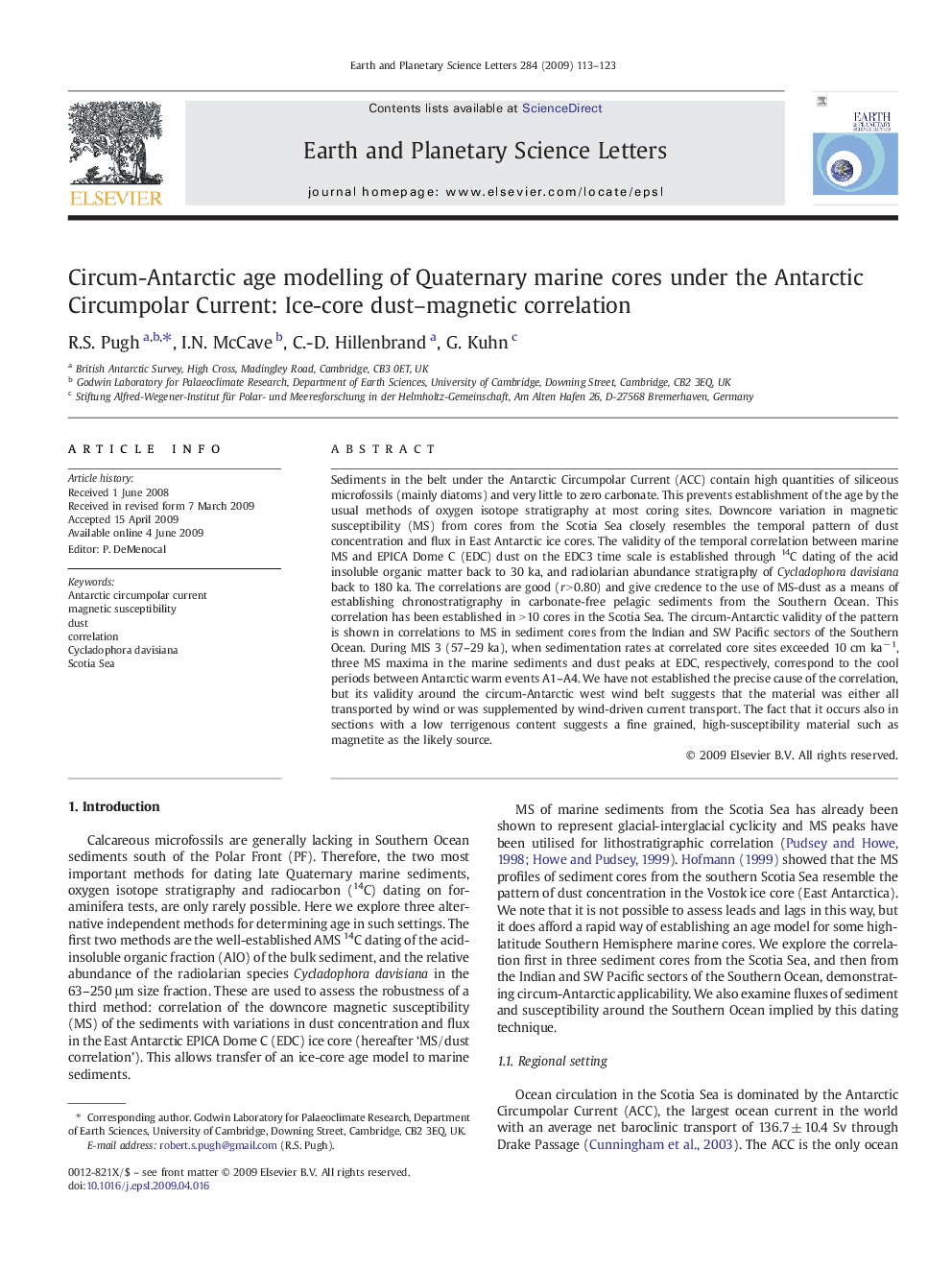| کد مقاله | کد نشریه | سال انتشار | مقاله انگلیسی | نسخه تمام متن |
|---|---|---|---|---|
| 4679203 | 1634871 | 2009 | 11 صفحه PDF | دانلود رایگان |

Sediments in the belt under the Antarctic Circumpolar Current (ACC) contain high quantities of siliceous microfossils (mainly diatoms) and very little to zero carbonate. This prevents establishment of the age by the usual methods of oxygen isotope stratigraphy at most coring sites. Downcore variation in magnetic susceptibility (MS) from cores from the Scotia Sea closely resembles the temporal pattern of dust concentration and flux in East Antarctic ice cores. The validity of the temporal correlation between marine MS and EPICA Dome C (EDC) dust on the EDC3 time scale is established through 14C dating of the acid insoluble organic matter back to 30 ka, and radiolarian abundance stratigraphy of Cycladophora davisiana back to 180 ka. The correlations are good (r > 0.80) and give credence to the use of MS-dust as a means of establishing chronostratigraphy in carbonate-free pelagic sediments from the Southern Ocean. This correlation has been established in > 10 cores in the Scotia Sea. The circum-Antarctic validity of the pattern is shown in correlations to MS in sediment cores from the Indian and SW Pacific sectors of the Southern Ocean. During MIS 3 (57–29 ka), when sedimentation rates at correlated core sites exceeded 10 cm ka− 1, three MS maxima in the marine sediments and dust peaks at EDC, respectively, correspond to the cool periods between Antarctic warm events A1–A4. We have not established the precise cause of the correlation, but its validity around the circum-Antarctic west wind belt suggests that the material was either all transported by wind or was supplemented by wind-driven current transport. The fact that it occurs also in sections with a low terrigenous content suggests a fine grained, high-susceptibility material such as magnetite as the likely source.
Journal: Earth and Planetary Science Letters - Volume 284, Issues 1–2, 30 June 2009, Pages 113–123